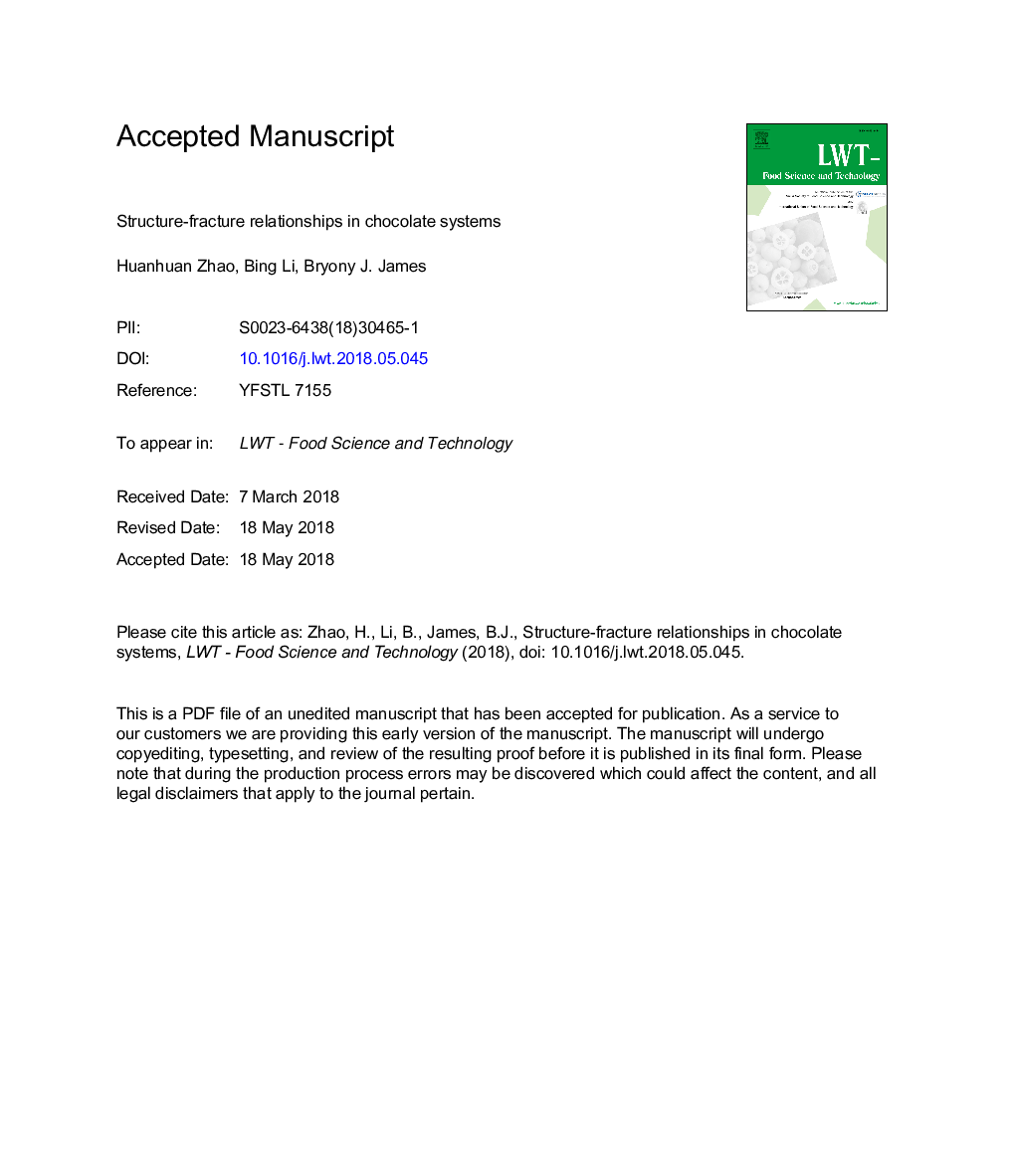| Article ID | Journal | Published Year | Pages | File Type |
|---|---|---|---|---|
| 8890481 | LWT - Food Science and Technology | 2018 | 31 Pages |
Abstract
The fracture properties of model and real chocolates were investigated using a three-point bend test. Chocolate bars were stored under cycling temperatures between 20â¯Â°C and 29â¯Â°C for 60â¯d, during which V-to-VI polymorphic transformation of cocoa butter was examined by X-ray diffraction. Prior to storage, the Young's modulus and fracture stress of both model and real chocolate bars increased with a reduction in fat ratio, owning to decreasing particle-particle or particle-fat interactions. In addition, the model chocolate bars with larger particle size had lower Young's modulus and fracture stress due to the lower free fat ratio and higher void ratio of the matrix. After storage, the Young's modulus of bloomed chocolate bars increased due to the decrease in liquid fat ratio, while the fracture stress decreased as a result of the growth in void space as fat bloom developed. However, no significant (Pâ¯<â¯0.05) interactions between storage time and fat ratio or particle size were found.
Related Topics
Life Sciences
Agricultural and Biological Sciences
Food Science
Authors
Huanhuan Zhao, Bing Li, Bryony J. James,
